In a rapidly moving world, ghost towns stand like stoic reminders of the incessant passage of time, the power of nature and the forgotten stories of all who have come before us.
Horrific towns are defined as abandoned towns or settlements, often associated with a time when the local economy was thriving and bustling with life. However, as time went by, the population declined, and the once thriving towns were left in ruins, abandoned and forgotten. The world is full of creepy towns, each with its own unique story.
1. Ruby, Arizona
As one of the best-preserved ghost towns in the American Southwest, Ruby, Arizona, remains a reminder of the Wild West. With a mine founded in the 1870s that produced gold, silver, lead, zinc, and copper, Ruby officially became a town when it opened its first post office in 1910, according to Ruby Mines, Inc.
Wild West history buffs aren’t the only people interested in Ruby; true crime enthusiasts and nature lovers should also be fascinated with Ruby.
The town and the surrounding area were the sites of three horrific double homicides known as the Ruby Murders. According to Legends of America, these led to one of the largest manhunts in Southwest history.
“The crimes of which you have been convicted are perhaps the cruelest ever committed in Arizona,” Judge W.A. O’Connor reportedly told the accused. “Let the punishment that awaits you serve as a warning to others who may contemplate the commission of similar crimes.”
The mines are now home to an enormous colony of Mexican free-tail bats. The giant cloud of bats can be seen rushing from the mine entrances at sundown during the summer.
Officially abandoned in 1940, the remains of Ruby are now on private land, and it’s one of the best-preserved western towns in the US.
2. Ashgabat, Turkmenistan
Turkmenistan is a former Soviet Union country with a leader that has been compared to North Korea’s Kim Jong-Un. President Saparmurat Niyazov planned to create a “golden era of Turkmenistan” in 1991 with the building of Ashgabat. He did so by erecting buildings that broke records, like becoming the city with the most marble buildings in the world.
In fact, the city has 543 buildings made of the luxury material. Ashgabat also has the world’s largest Ferris wheel.
Today, the city is referred to as “the city of the dead” because it appears empty. This is in part because of the country’s isolated culture: Turkmenistan is one of the least-visited countries in the world.
3. Craco, Italy
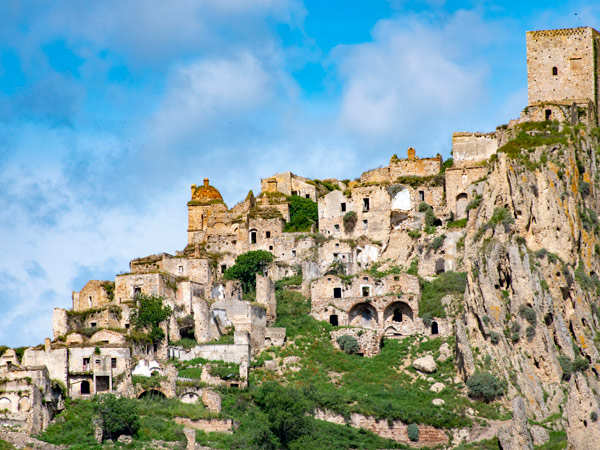
As a land prone to violent natural disasters, Italy is full of ghost towns, from the ash-covered ruins of Pompeii and crumbling Roman ruins to barely inhabited cave dwellings and earthquake-damaged medieval towns and villages. Towns like Basilicata’s Craco, a thousand-year-old cliff-side ghost town that was hit with a succession of landslides, a flood and an earthquake.
Abandoned since the early 1980s, Craco has a bit of a time-stands-still vibe about it. While most of the stacked-up stone houses have long been emptied of anything valuable, it’s the things that do remain that make it interesting, like old ovens, tipped-over chairs, and glass bottles that are somehow still standing upright on shelves – even despite the landslides and earthquakes that led to the town’s downfall.
4. Pripyat, Ukraine
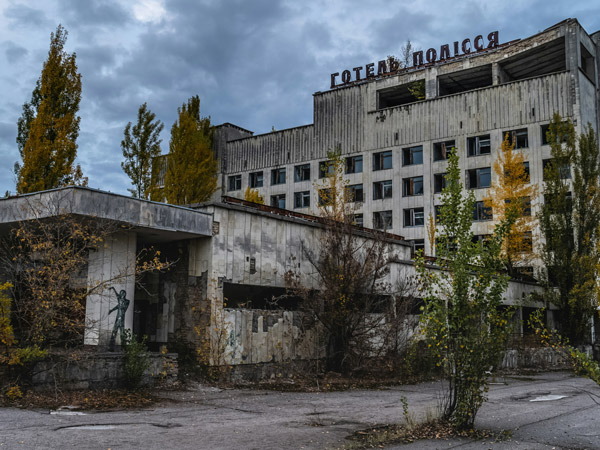
Arguably one of the most famous ghost towns in the world, Pripyat is also one of the creepiest. Located in Northern Ukraine, close to the border with Belarus, Pripyat started life in 1970 as an “atomgrad” or atomic city, built around the Chernobyl Nuclear Power Plant to accommodate the plant’s workers and their families.
Just 16 years later, Pripyat became a household name overnight after one of the nuclear reactors melted down, leading to the entire city – and everything within a 30-kilometre radius around it – being evacuated. Unlike many other ghost towns in the world, one of the things that makes Pripyat so enthralling – and so creepy – is how quickly everyone had to leave, with residents rushing out the door, only able to take what they could carry.
5. Oradour-sur-Glane, France
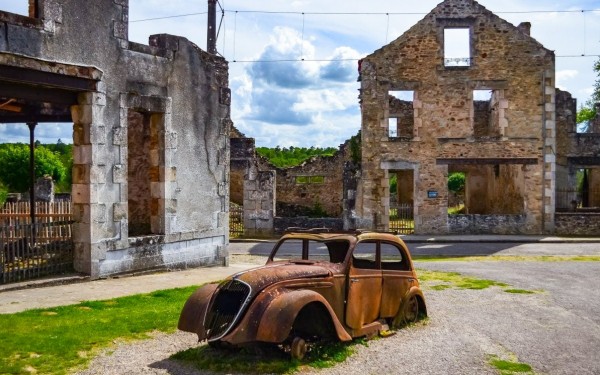
On the afternoon of June 10, 1944, the village of Oradour-sur-Glane was the scene of one of the worst massacres of French civilians during World War II. In what is believed to have been an act of revenge for the town’s supposed support of the French Resistance, a Nazi Waffen SS detachment rounded up and murdered 642 of its residents and burned most of their houses to the ground. The men were taken to barns and machine-gunned, and the women and children were locked in a church and killed with explosives and incendiary grenades. Only a handful of people managed to survive by playing dead and later fleeing to the forest.
A new Oradour-sur-Glane was built nearby after the war ended, but French President Charles de Gaulle ordered that the burned-out ruins of the old town be left untouched as a monument to the victims. The facades of dozens of brick buildings and charred storefronts still remain, as well as graveyards of rusted cars and bicycles, scattered sewing machines and unused tram tracks. The site is also home to a museum, which holds a collection of relics and mementos recovered from the rubble.
6. Hashima Island, Japan
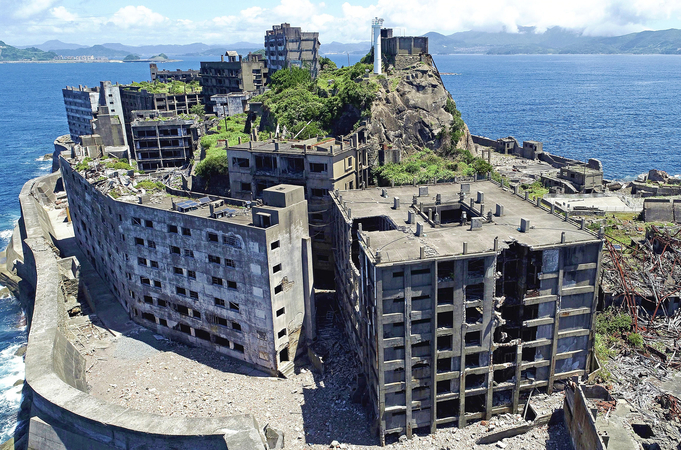
oday, Hashima Island is a vacant labyrinth of crumbling concrete, sea walls and deserted buildings, yet it was once among the most densely populated places on the planet. The small island off the coast of Nagasaki was first settled in 1887 as a coal mining colony. It was later purchased by Mitsubishi, which built some of the world’s first multi-story, reinforced concrete buildings to house its bursting population.
Hashima remained a hive of activity for the next several decades, especially during World War II when the Japanese forced thousands of Korean laborers and Chinese POWs to toil in its mines. By the 1950s, the 16-acre rock was packed to the gills with more than 5,200 residents. Most workers found the cramped conditions unlivable, and the city was promptly abandoned after the mine closed in 1974.
Forty years of neglect have left Hashima a dilapidated ruin of collapsed staircases and condemned apartments. Many of its high-rises are still filled with old televisions and other relics from the mid-20th century, and its once-teeming swimming pools, barbershops and school classrooms now sit in shambles. The island was officially opened to tourists in 2009, and it has since served as the inspiration for the villain’s hideout in the 2012 James Bond film “Skyfall.”
7. Grand-Bassam, Ivory Coast

While Grand-Bassam still has a thriving population, many of its most striking buildings have been empty for years.
Once the French colonial capital of Côte d’Ivoire, the resort town is now a UNESCO World Heritage Site, with noted structures such as the old Post Office, Central African Bank and the Hotel de France.
The history of Grand-Bassam dates back much further than the French. The Nzema people, also known as Ndenye or Apollonians, of the Ivory Coast are thought to have lived here from the 15th century, growing the town into a lively port and fishing village before the arrival of colonists.
8. Kolmanskop, Namibia
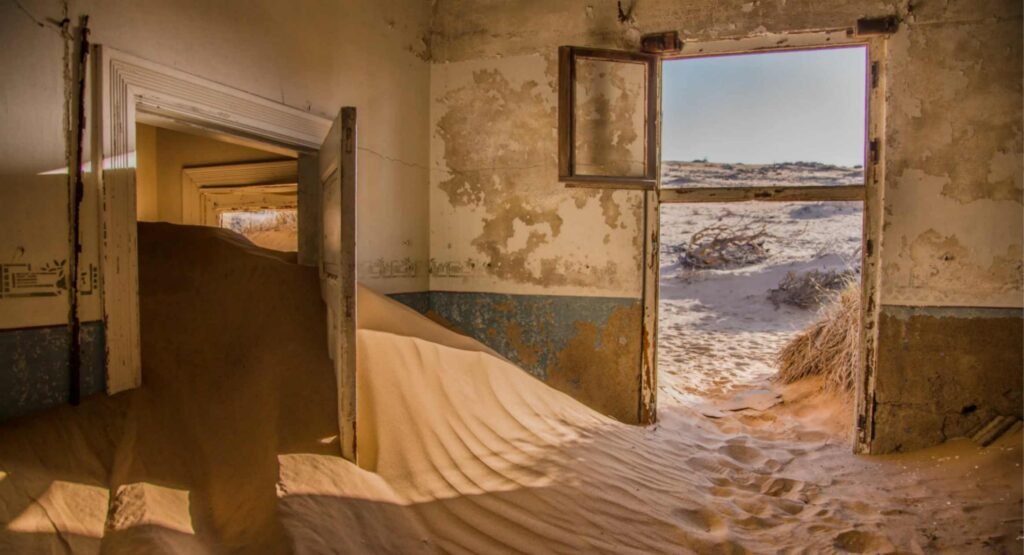
Kolmanskop, a ghost town buried in Namibia’s Namib Desert, fascinates with its sand-filled, abandoned buildings. In 1908, a railway worker discovered diamonds here, sparking a rush of prospectors. By 1912, the town flourished, boasting luxurious amenities and eccentricities, like a pet ostrich pulling a sleigh. However, by the 1930s, diamond resources dwindled, and richer fields were found elsewhere. By 1956, Kolmanskop was abandoned, its structures gradually overtaken by encroaching sand. Today, tourists flock to this eerie site, a poignant reminder of human ambition and the relentless passage of time.
9. Rhyolite, Nevada, USA
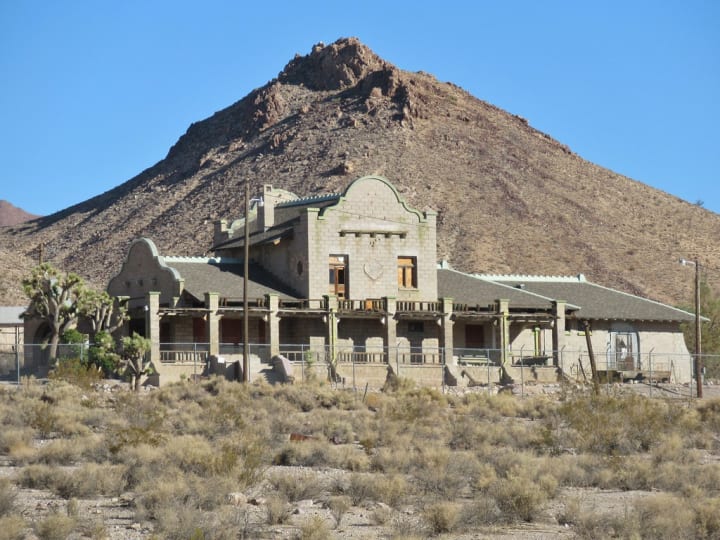
Rhyolite, Nevada, is a ghost town that was once a thriving gold-mining town in the early 20th century. The town was founded in 1904, and its population quickly grew to over 10,000 residents. However, as the gold deposits were depleted, the population declined, and eventually, the town was left abandoned.
Today, Rhyolite is a popular tourist destination, and visitors can see the remains of the once thriving town. The town has been preserved, and visitors can see the abandoned buildings, including the famous bottle house, which was made entirely out of glass bottles. Rhyolite is also home to several outdoor art installations, including the famous “Goldwell Open Air Museum,” which showcases the works of several famous artists.
10. Terlingua, Texas

When the Chisos Mining Company opened in the mid 1800s, workers and their families quickly relocated to Terlingua, Texas. The population was around 3,000 at its peak in 1903, but, as of the last Census in 2010, only 58 people remain.
Those who still live there reside in “Terlingua Proper” and make good business off of the frequent tourists who stop by to see the abandoned churches and buildings that still stand, as well as visitors to the surrounding Big Bend parks.














Leave a comment